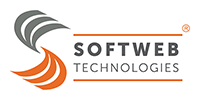Imagine having the power to know exactly where your valuable items are at all times. Modern asset tracking technologies provides this capability, acting as a sophisticated tool to monitor your assets.
Whether in construction, healthcare, retail, agriculture, hospitality or asset management for information technology, selecting the right asset-tracking system is essential for the efficient use and management of organization’s resources.
There’s no doubt that asset tracking can prevent financial losses, cut down replacement costs, and promote optimal asset utilization.
The Global Asset Tracking market will reach $36.3 billions by 2025.
Industry Use Cases
– Warehousing: Misplaced inventory can lead to overstocking or stockouts, raising storage costs and disrupting order fulfilment.
– Logistics: Delays and lost shipments arise from difficulty in tracking packages and fleet vehicles, increasing fuel costs and inefficiencies.
– Construction: Misplaced tools on job sites lead to costly delays and replacement expenses.
– Healthcare: Hospitals struggle to locate crucial equipment like ventilators, delaying patient care and impacting operations.
– Agriculture: Asset tracking helps monitor vehicles, equipment, and inventory, boosting productivity and minimizing downtime. Many agricultural companies now implement LoRaWAN for seamless operations.
It’s clear that across industries, asset tracking plays a crucial role in boosting efficiency and cutting costs.
Why Asset Tracking Technologies needed?
With many systems available, finding the ideal asset tracking technology can be overwhelming. Each technology, like LoRaWAN, Bluetooth, and Wi-Fi, offers distinct advantages. Let’s consider the key criteria:
– Precision: Accurate tracking of asset location and status is essential.
– Real-Time Monitoring: Real-time updates enhance decision-making and efficiency.
– Scalability: The solution should expand as your operations grow, without performance drops.
– Cost-Effectiveness: Look for a system that delivers a strong ROI.
– User-Friendliness: A simple, intuitive system ensures quick adoption with minimal training.
– Reliable Support: Prompt maintenance and support from the vendor are vital for smooth operation.
Types of Asset Tracking Technologies:
1. LoRaWAN
LoRaWAN tags use long-range radio frequencies to transmit data to nearby gateways, which then send it to a server or cloud platform. Ideal for large distances, LoRaWAN provides real-time asset visibility with low power consumption.
2. GPS
Using satellites, GPS tracks asset location with high accuracy. The GPS device sends location data to a central system, enabling real-time tracking from an app or website.
3. Bluetooth (BLE)
BLE asset tracking uses low-energy beacons to communicate with nearby devices, such as smartphones or BLE receivers. It’s ideal for tracking assets indoors within a limited range, like equipment in hospitals or inventory in warehouses, due to its low cost and power efficiency.
4. Wi-Fi
Leveraging existing Wi-Fi infrastructure, this technology enables real-time asset tracking within Wi-Fi access points, offering a cost-effective, scalable solution for various industries.
5. Passive RFID
RFID technology uses radio waves to identify and track tagged assets. Passive RFID tags require a nearby reader to activate them, while active RFID tags have their own power source, allowing for longer range and continuous tracking. RFID is commonly used in warehouse, inventory management and retail.
6. NFC
NFC technology allows for close-range tracking, typically within a few centimetres. It is often used for access control, inventory checks, and document tracking. NFC tags can be scanned with smartphones or specialized readers, making them useful in retail and event management.
7. Ultrasonic
Ultrasonic tracking uses high-frequency sound waves to locate assets, especially in indoor environments. It’s accurate for short-range applications and is commonly used in healthcare to track medical devices and in manufacturing to locate equipment within facilities.
Each of these technologies has distinct strengths, making them well-suited for various asset-tracking needs

